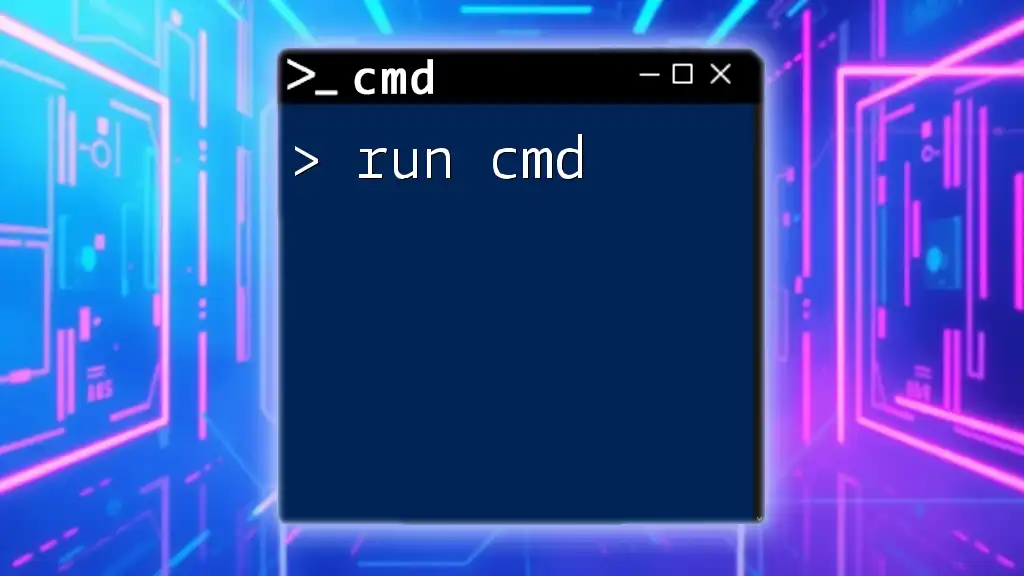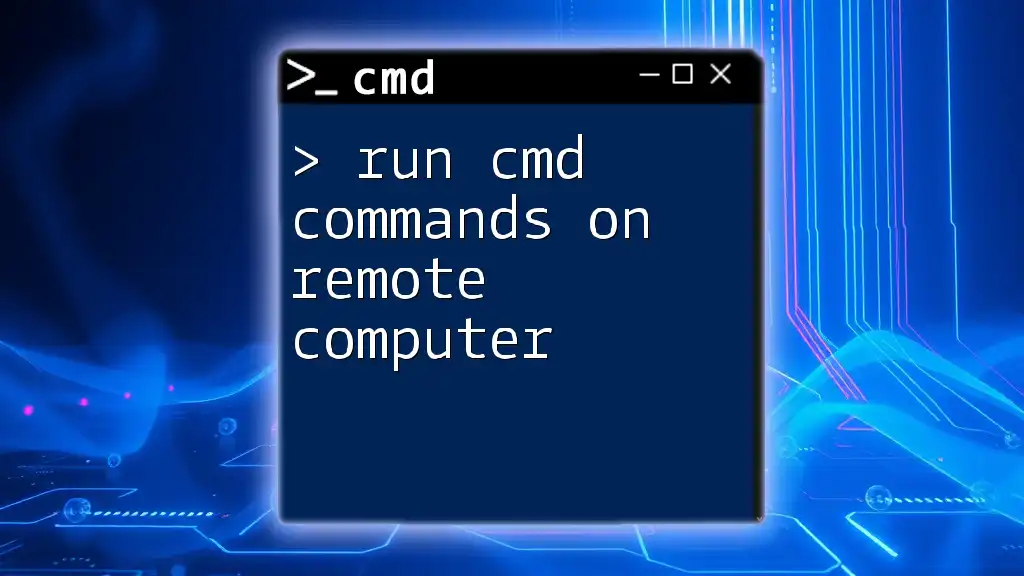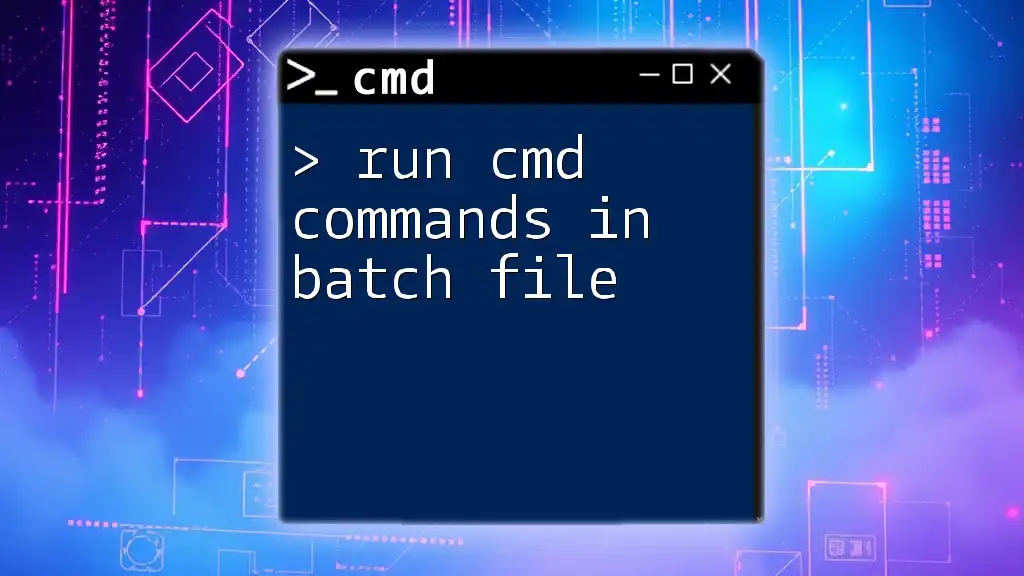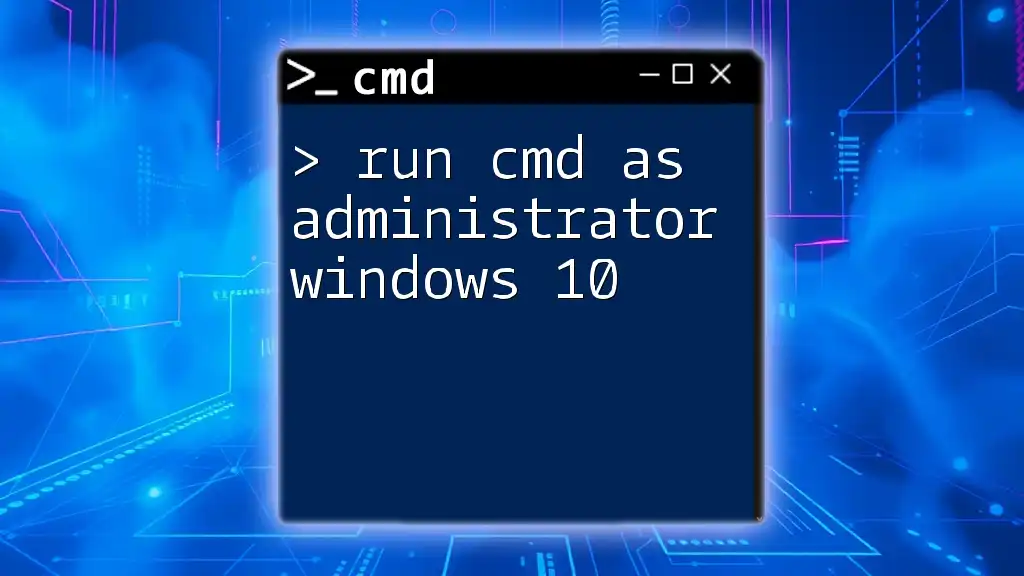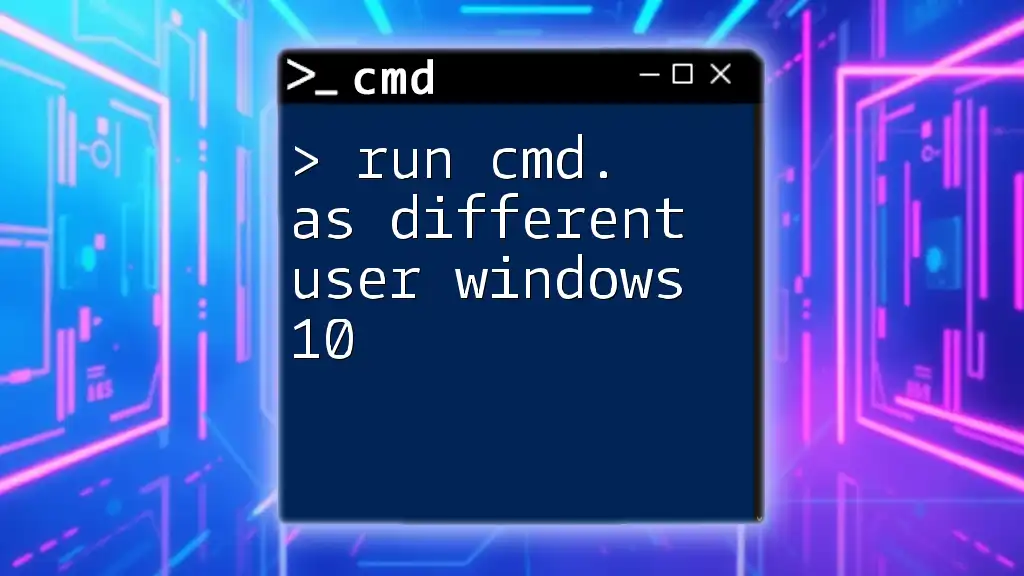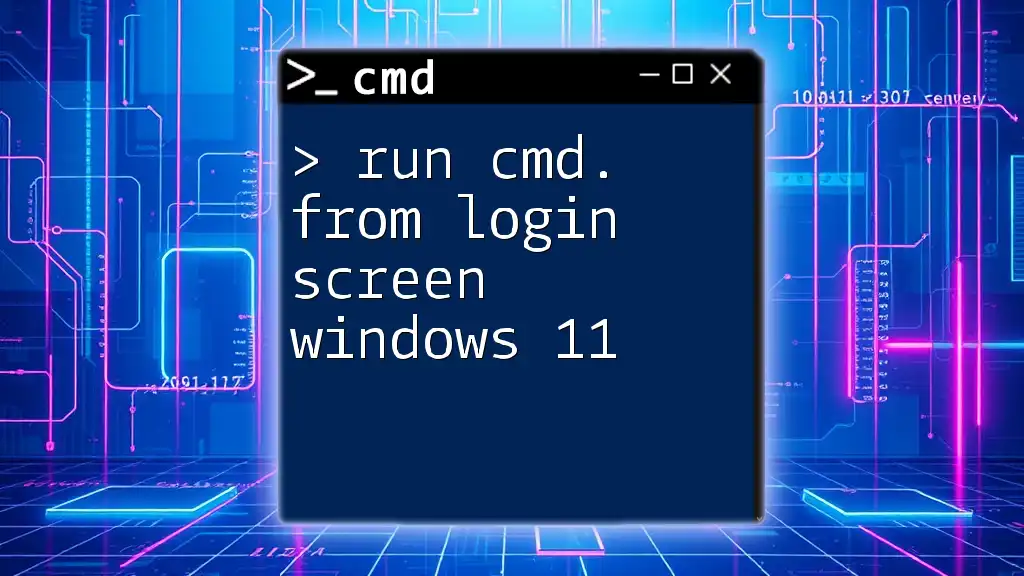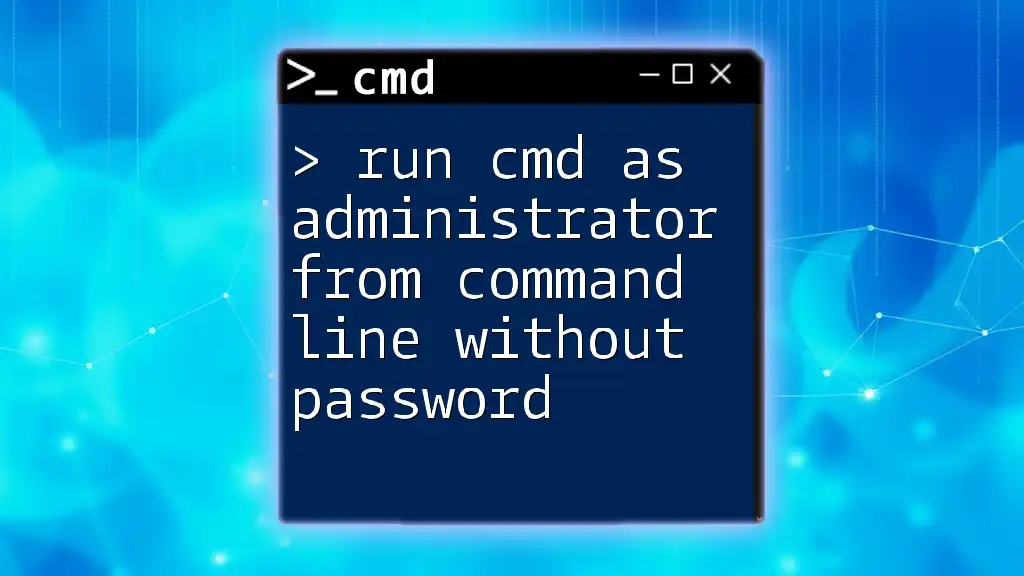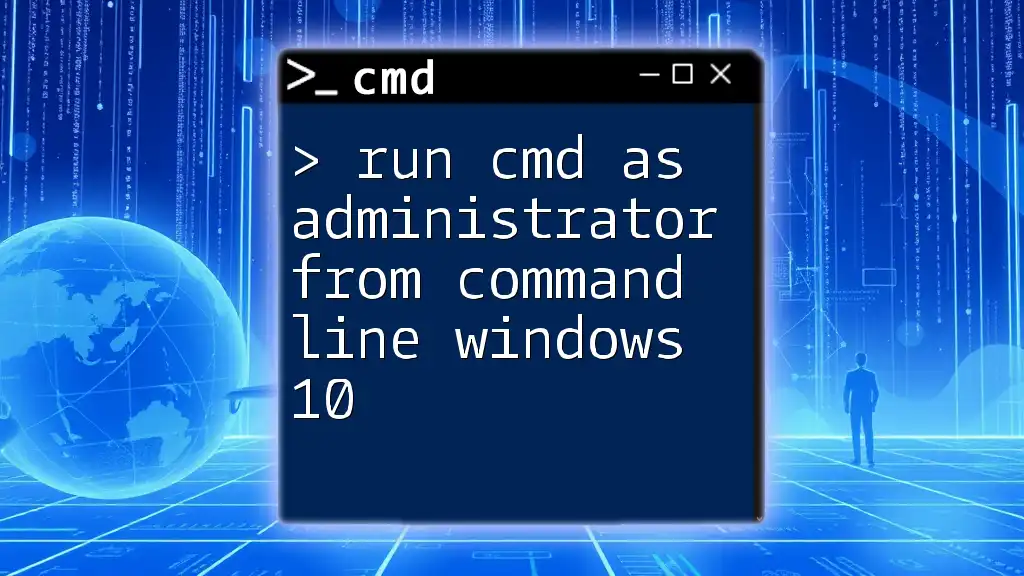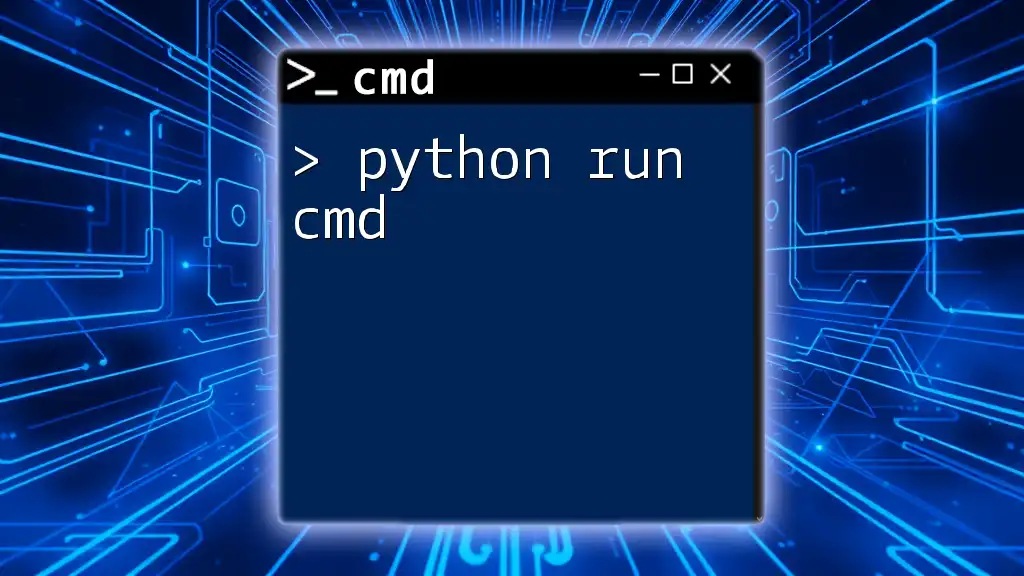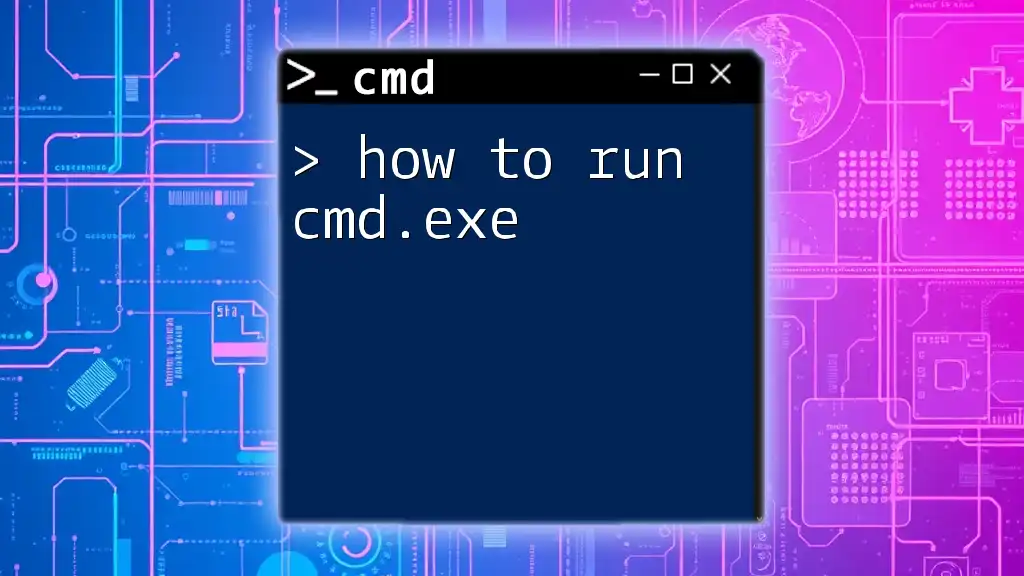To run CMD (Command Prompt) commands, simply open the application and type the desired command followed by pressing the Enter key.
echo Hello, World!
What is CMD?
CMD, short for Command Prompt, is a command-line interpreter application available in most Windows operating systems. It allows users to execute commands for various tasks directly in a text-based console. Originally designed for DOS, CMD has evolved to assist users in navigating, configuring, and managing their systems more efficiently.
Understanding CMD is crucial for various tasks such as file manipulation, network diagnostics, and troubleshooting system issues. CMD provides a powerful interface for users who prefer textual commands over graphical interfaces, enabling advanced operations that may not be possible through the standard Windows GUI.

How to Access CMD
Opening CMD in Different Ways
Through Search Bar
You can easily access CMD by typing “cmd” in the Search Bar located next to the Start Menu. Once you see Command Prompt in the search results, simply click on it.
Using Run Dialog
Another quick way to run CMD is by using the Run dialog. Press `Win + R` to open it, type `cmd`, and hit Enter. This method provides immediate access regardless of how your desktop is arranged.
From Task Manager
If you are already in Task Manager, you can launch CMD by going to the File menu, selecting Run new task, typing `cmd`, and hitting Enter. This is particularly useful when your system is unresponsive.
Creating a Desktop Shortcut
For frequent users, creating a shortcut on your desktop offers one-click access. Right-click on your desktop, choose New > Shortcut, type `cmd`, and finish the setup. This allows for a quick launch without navigating through menus.
CMD vs. PowerShell
While both CMD and PowerShell serve as command-line interfaces, they differ significantly in functionality and features. CMD is primarily designed for basic command execution and scripting tasks. In contrast, PowerShell is a more advanced shell that allows for greater automation and supports complex scripting with its robust commands (cmdlets). When you need to execute simple commands, CMD is often quicker and easier; for more complex automation or system management tasks, PowerShell is the preferred choice.
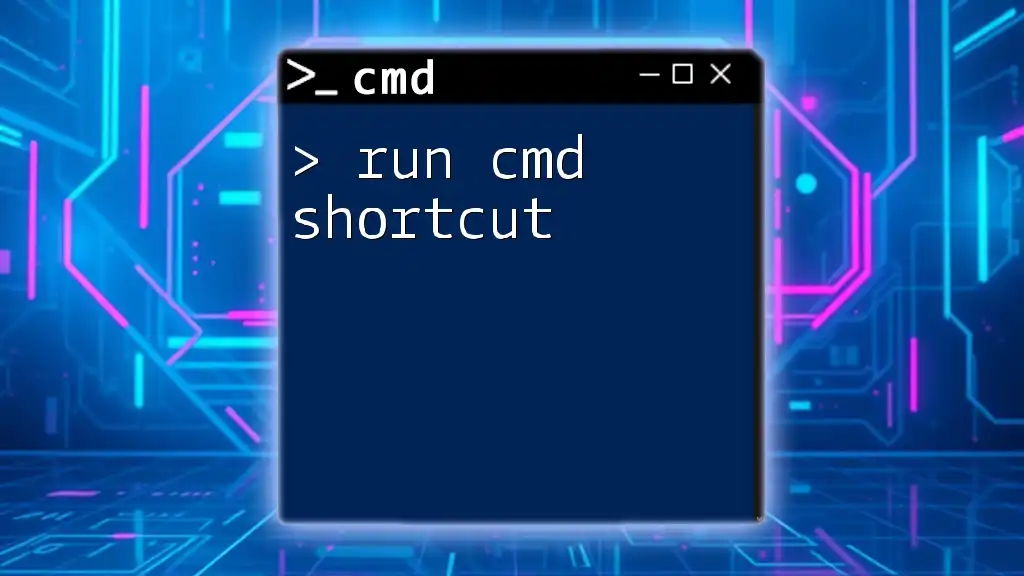
Understanding CMD Interface
Basic Layout Overview
The CMD window layout consists of a title bar, a status bar, and a command line area where you type commands. The command line typically displays a prompt, which indicates the current directory (e.g., `C:\>`). The prompt not only shows the working directory but also signifies that the system is ready to accept commands.
Common Symbols and Shortcuts
-
Command Prompt Symbols: The symbol `C:\>` (or similar variations depending on your system) indicates your current working directory. It is essential to understand this prompt as it guides users where they are in the filesystem.
-
Useful Keyboard Shortcuts: Knowing keyboard shortcuts can save time:
- Tab: Pressing `Tab` auto-completes file and directory names, allowing for quicker navigation.
- Ctrl + C: This combination copies the selected text or command output, making it easy to use in other applications.
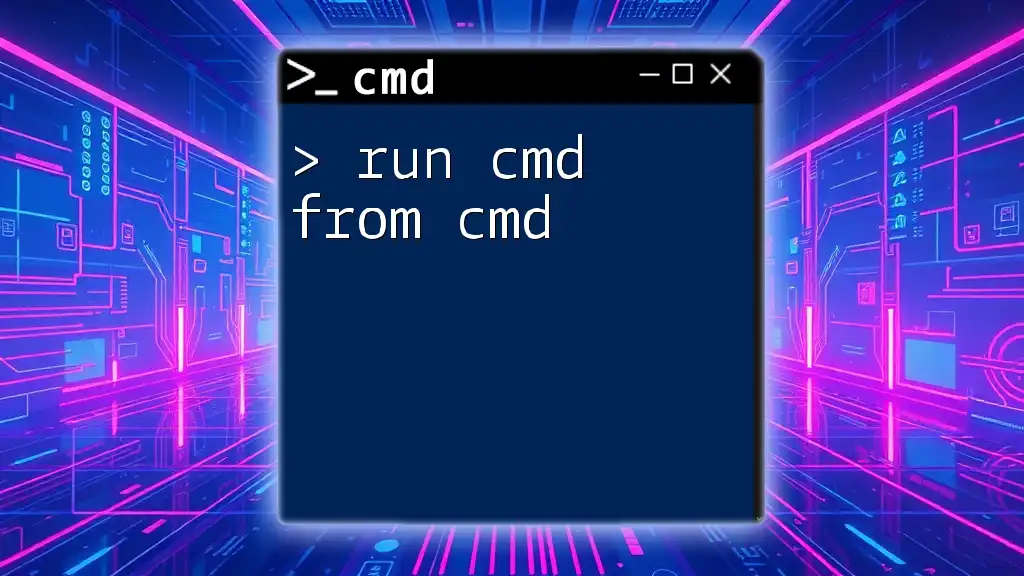
Running Commands in CMD
Basic Commands
Navigating Directories
One of the most fundamental tasks in CMD is navigating through directories. Use the `cd` (Change Directory) command to move between directories. For example, to navigate to the Users directory, enter:
cd C:\Users
Listing Files
To see the contents of the current directory, use the `dir` command. This command also supports various options. For a wide list display, run:
dir /w
Creating Folders
Creating folders in CMD might be necessary for organizing files. Use the `mkdir` (Make Directory) command like so:
mkdir NewFolder
Advanced Commands
File Manipulation
CMD allows for several commands to manage files:
- `copy`: To duplicate files. For example, you can copy a file from one location to another:
copy C:\source.txt D:\destination.txt
- `move`: This command is used to transfer files:
move C:\file.txt D:\
- `del`: To delete files, you may need to exercise caution. The command looks like this:
del C:\file.txt
Network Commands
CMD also serves as a handy tool for network diagnostics:
- `ping`: This command checks your network connection. For example:
ping google.com
- `ipconfig`: Use this command to display your current IP configuration information:
ipconfig
System Commands
CMD can help maintain system health. Two key commands are:
- `chkdsk`: This checks for disk errors. To use it, simply enter:
chkdsk
- `sfc /scannow`: This command scans and repairs corrupted system files, which can prove invaluable during troubleshooting:
sfc /scannow
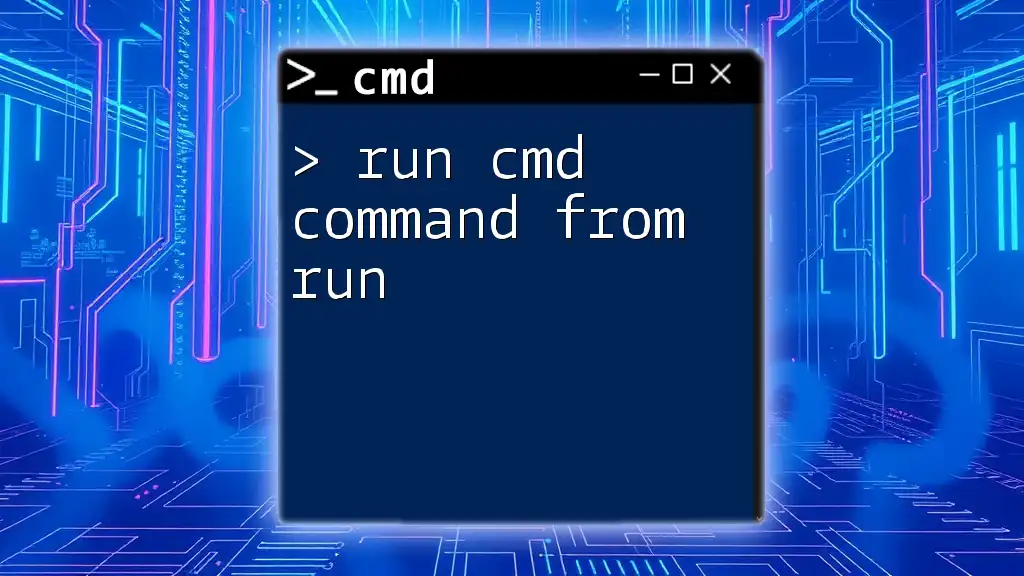
Tips for Effective CMD Usage
Command Syntax Best Practices
The syntax of each command matters significantly. Ensure that you enter commands correctly, as even a small typo can result in an error. Pay attention to case sensitivity and ensure you use the correct paths. Familiarity and practice will make this much easier over time.
Saving and Exporting Command Results
One powerful feature of CMD is the ability to save command outputs to a text file. For instance, if you want to capture your IP configuration to a file, you can do:
ipconfig > results.txt
This command will create a `results.txt` file in the current directory containing the output of the `ipconfig` command.
CMD Shortcuts for Efficiency
Automating repetitive tasks can be handled effectively with batch files. A batch file is simply a text file containing a series of commands that are executed in sequence. You can create one with a `.bat` extension and run it to perform tasks quickly. Additionally, creating custom command aliases can further streamline your workflow, making frequently used commands accessible through shorter keys.
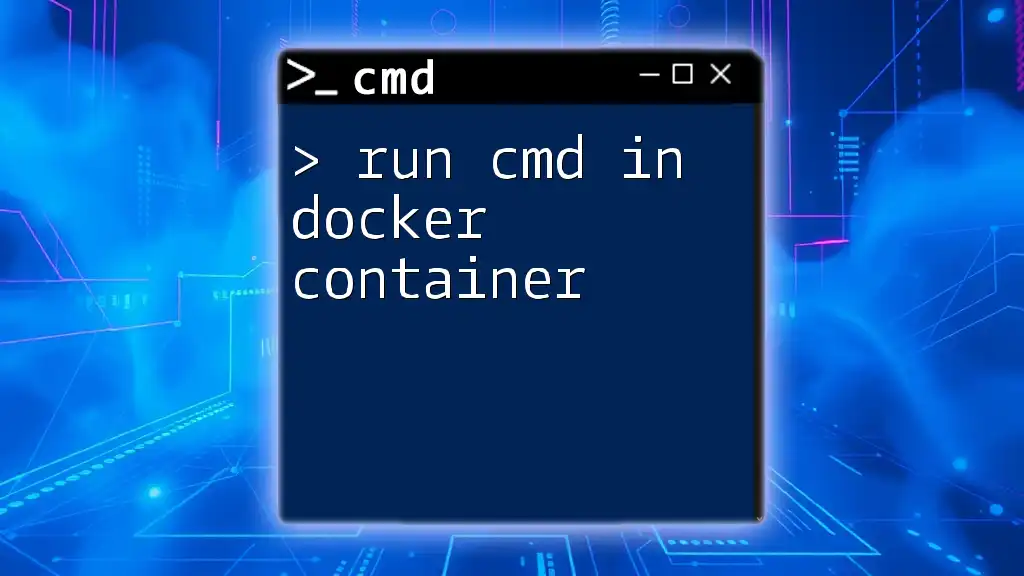
Troubleshooting Common CMD Issues
CMD Not Recognized
If you see an error indicating that CMD is not recognized, it could stem from a problem with your system's PATH variables. This means your system is unable to find the CMD executable. You might need to manually adjust your system's environment variables to fix this issue.
Permission Issues
Sometimes commands require administrative privileges. To run CMD as an Administrator, search for it in the Start Menu, right-click, and select Run as Administrator. This allows you to execute commands that affect system settings.

Conclusion
In this guide, we've explored the fundamentals of running CMD commands, including how to access CMD, the differences between CMD and PowerShell, and essential commands for file and network management. Understanding how to use CMD effectively can significantly enhance your computational skills and improve your ability to troubleshoot and manage Windows environments.
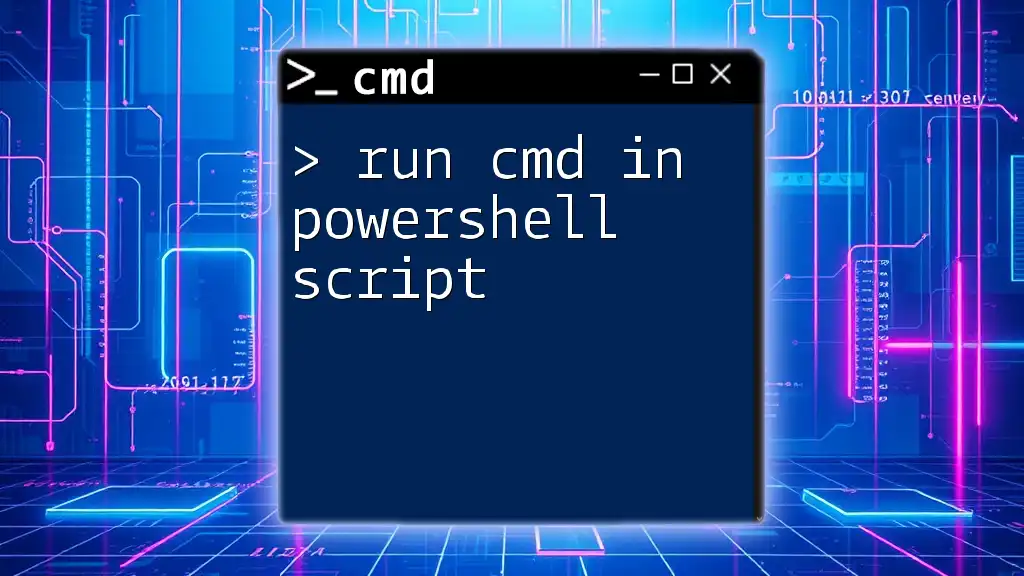
FAQs
What is the difference between CMD and Terminal?
CMD is specific to Windows, while Terminal is a broad term that refers to command-line interfaces on UNIX-based systems (like macOS and Linux). Terminal uses shells like Bash, whereas CMD uses a simpler command syntax.
Can I run CMD commands in a non-Windows environment?
Generally, CMD commands are exclusive to Windows systems. However, you can find similar command-line interfaces on Linux or macOS, but the commands and syntax may vary.
How do I clear the CMD screen?
Clearing your CMD screen for better visibility can be achieved by typing the command:
cls
This will remove all previous commands and outputs from your view, providing a clean slate for new commands.
Additional Learning Resources
To deepen your understanding of CMD and its capabilities, consider exploring additional articles, video tutorials, and online courses dedicated to mastering the Command Prompt. Such resources can provide valuable insights and advanced techniques, further enhancing your command-line proficiency.

